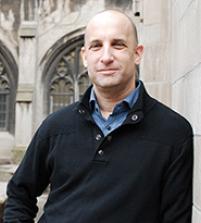
Jews, Semites, and Antisemitism
We need a conceptual approach that recognizes the multifaceted nature of identity and groups.
I received a heated letter recently from a stranger in California instructing me on the nature of Jewish identity. After Hamas’s horrific attack in Israel and defenses of it online as contextually justified and negligible, I had posted my opinion that denying the Jewish people’s right to self-determination in their ancestral homeland is racism. The reader objected that since Jews do not have uniform physical signs that determine race or ethnicity, “racism” does not apply. The reply echoes a speech given some weeks earlier by Mahmoud Abbas, the president of the Palestinian Authority, who said that European Ashkenazi Jews are not Semites, have nothing to do with Semitism, are not subject to antisemitism, and do not belong in Israel, while Sephardi Jews of Arab and Muslim lands were forced to Israel by Ashkenazi Jews and belong in their countries of origin.1 In short, Jews comprise not one ethnicity but two and what they share, presumably, is religion.
Abbas’s claim contradicts the history of the term “antisemitism.” Since its coinage nearly one hundred and fifty years ago in French, German, and English, the term has been used to refer specifically to hatred of any and all Jews and Jewish things.2 Many historians today use “antisemitism” to refer to a racialized hatred of European Jews in the Early Modern period, which developed from a religious “anti-Judaism." 3 In 2016, the thirty-one nations of the International Holocaust Remembrance Alliance (IHRA) formally affirmed that antisemitism refers to hatred of Jews.4 But in a list of examples, the IHRA refers to Jews carefully as a collective, never as a race or ethnic group, and once it implies a shared religion. Is the idea of antisemitism that Jews are hated on racial/ethnic grounds as Semites, on religious grounds as adherents of Judaism, or on other grounds? Jewish identity, I’ve written before, confounds our conventional categories.5
The oldest instance on record of hatred of Jews as such, of Jew-hatred, is probably the story of the biblical book of Esther. When one diaspora Jew refuses to bow down before one vicious and ambitious high-ranking official of the Persian empire, the official orchestrates an imperially sponsored day for killing all the Jews across the empire. To persuade the emperor, the official describes the Jews as having norms that make them so different from all the many peoples of the empire that it threatens the empire to let them live.
Many Bible scholars think that Esther was written well over a century after what it portrays, and that it is not an earnest account of a real event, but a fictionalized or even fictional parody. Even so, its author lived—most likely in Judea—when such a portrayal would resonate with its audience: Jews throughout the world are painted as being more different from everyone than all other peoples are from each other, so much so that one volatile, dangerously-placed official could ignite an empire-wide pogrom to eradicate them.
Jews in Esther are referred to by their place of origin as “Judeans,” which sounds racial/ethnic, and they are identifiable by distinctive norms—the Persian loanword in the Hebrew is close to “laws”—which could sound religious. Other aspects of the story give similarly confusing indications about the nature of Jewish identity. But the story does not identify the Jews as Semites or the imperial plan to eliminate them as antisemitism. Just where does the racial/ethnic identification of Jews as Semites come from?
It has its roots in other books of the Bible. According to the story in Genesis, after God floods the world he created to flush it of its evil, his designated survivors repopulate it, Noah’s three sons, Shem, Ham, and Jephet (and their wives). The story lays out the genealogy of Shem, Ham, and Jephet up to four generations deep as Semites, Hamites, and Jepethites, it places their descendants geographically, and it distinguishes the populations by language. Another genealogy of Shem follows, leading through ten generations of Semites to Abraham. Importantly, one episode has Noah cursing Ham’s son Canaan and blessing Shem and Jephet, while another has God choosing and blessing Abraham.
The biblical book of Chronicles reuses this genealogy of Genesis directly, but no other work of the Bible connects Abraham, Israel, Jews, or any other groups with Shem or describes them as Semites. In fact, passages in Genesis contradict the portrayal outright. According to Bible scholars, Genesis contains additional genealogical-geographical material that has been spliced in from other Israelite sources. One of these sources has a different genealogy and geography altogether, in which there are four unrelated founders of four regions. The source knows nothing about a flood or Noah and his three sons. In this geography, Hebrews have nothing at all to do with Shem or Semites. Nor does anyone else in the Middle East or around the world. The source shows that different Israelites held contradictory ideas about the origins and development of their world and of their place in it. But the way the source was spliced into the text allows the scheme of Noah’s three sons to dominate readers’ impressions.
Since the early Middle Ages, the genealogies, geographies, language families, and curses and blessings in Genesis played a decisive role in the idea to plot the world as made up of three races: Shem’s Jews and others of the Middle East, Ham’s “accursed” Africans, and Jephet’s Europe.6 Physical characteristics, or better, physical characterizations played a major role in defining the three races. So did geography and climate. With the Enlightenment, the theory of evolution, and the rise of nation-states, those engaged in delineating races pointed to forms of civilization and social organization as supporting indicators. But the discourse of race is especially shot through with religion: noble Christianity, degenerate Judaism and “Mohammadism” (as they called Islam then), and the “heathenism” of everyone else. Indeed, historians have shown that defining and assigning race by religion has a deep history; medievals were doing it, early moderns were doing it, and we do it too.7
While the nouns “race” and “religion” denote distinct phenomena, in practice people have long used the underlying concepts in intertwined and twisted ways to categorize people and rank them. Jewish identity cannot be reduced to either the biologizing “race/ethnicity” or the spiritualizing “religion,” but the categories themselves of race and religion are each inflected by the other. Instead of conceptualizing groupings or identities as reducible to single and fixed characteristics, we need an approach that recognizes the multifaceted nature of identity and the fluid, circumstantial dynamics of groups. We would also do well to refer to hatred of Jews and things Jewish in those very terms and to cease using the esoteric, coded, misleading, and deeply troubled terms of “semitic” identity and “antisemitic” sentiment and behavior altogether.
Featured photograph by Aaron Burden via Unsplash
1 https://www.memri.org/tv/palestinian-president-mahmoud-abbas-denies-jewish-connection-israel-hitler-fought-jews-usury-not-antisemitism.
2 The Oxford English Dictionary Online: https://www.oed.com/dictionary/anti-semitism_n?tab=meaning_and_use#1281215; Merriam-Webster: https://www.merriam-webster.com/dictionary/anti-Semitism.
3 Ronnie Po-chia Hsia, “Religion and Race: Protestant and Catholic Discourses on Jewish Conversions in the Sixteenth and Seventeenth Centuries,” in The Origins of Racism in the West (ed. Miriam Eliav-Feldon, Benjamin Isaac, and Joseph Ziegler; Cambridge, UK: Cambridge University Press, 2009) 265–275.
4 The U.S. Department of State: https://www.state.gov/defining-antisemitism/ and https://2009-2017.state.gov/j/drl/rls/fs/2010/122352.htm; IHRA: https://www.holocaustremembrance.com/sites/default/files/press_release_document_antisemitism.pdf and https://www.holocaustremembrance.com/stories/working-definition-antisemitism.
5 Sightings, Dec. 19, 2019: https://divinity.uchicago.edu/sightings/articles/jews-and-judaism-religion-and-identity.
6 David Goldenberg, The Curse of Ham: Race and Slavery in Early Judaism, Christianity, and Islam (Princeton: Princeton University Press, 2003).
7 Geraldine Heng, The Invention of Race in the European Middle Ages (Cambridge, UK; New York: Cambridge University Press, 2018); Po-chia Hsia, “Religion and Race.”


